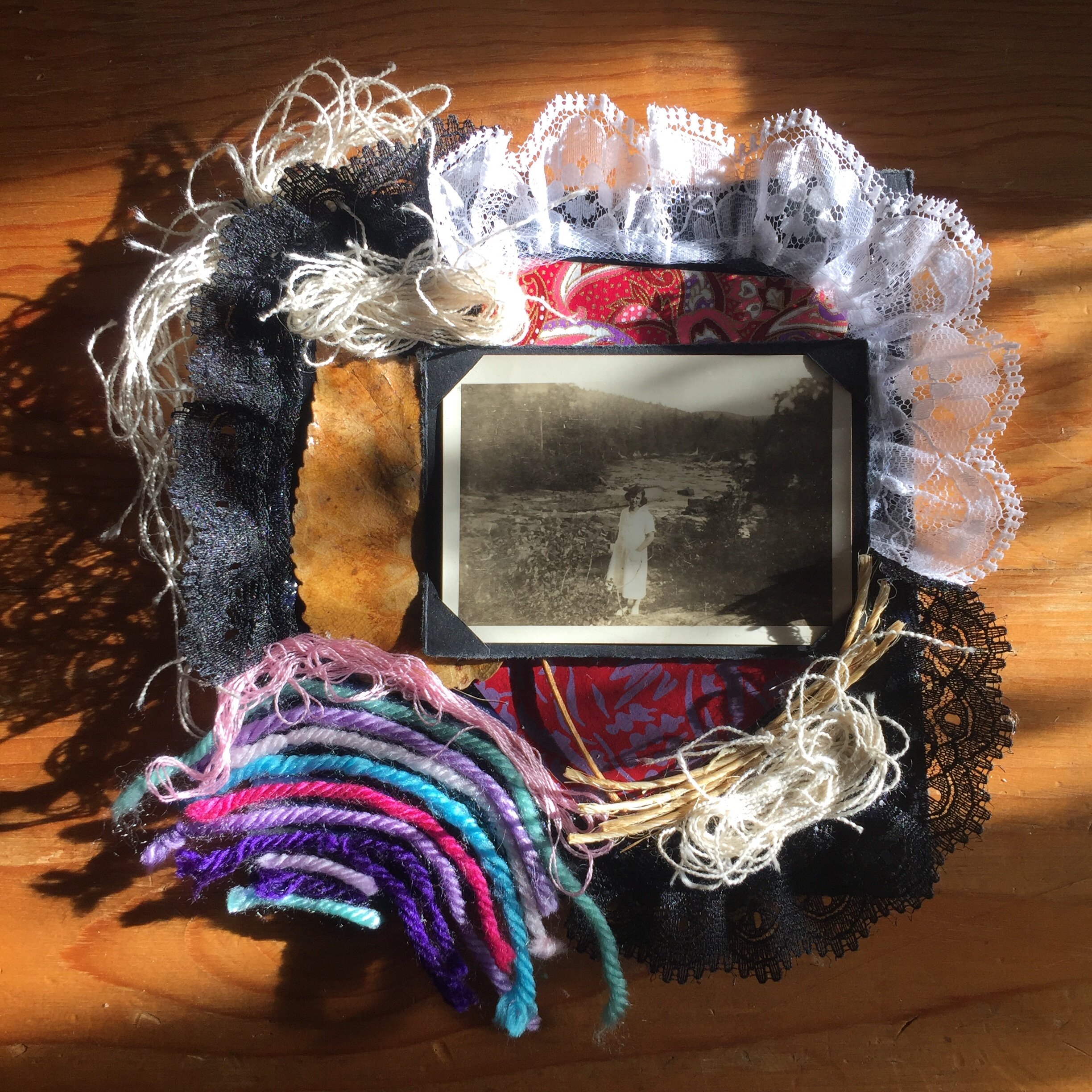Nearly ten years ago I got my first full-time office job. I copied and pasted, has bad posture, and ended up with a serious repetitive strain injury that still haunts the nerves in my neck, shoulder, arm, wrist, hand, and back. Over the years I’ve also stored my stress in my muscles. Periodically I’ve dedicated myself to easing this pain with weights and stretching, but I don’t like doing a lot of exercise—I like doing art. When my dad died in addition to the old injury, plus my general bad habits, I became a ball of tenseness. In particular this time I sent the stress into my leg. My foot became sore in the arch, to the point that walking became painful. I didn’t notice what was happening—during those early days I didn’t want to exercise. Anything that felt like getting in touch with my body felt too sad, too tinged with mortality and grief. When my foot began to hurt I did an easy stretch and found something that used to be comfortable was now nearly impossible.
I got over my bashfulness and got a few massages—a luxury I could afford thanks to health insurance but that should not be a luxury—everyone in this kind of pain should have this covered.
I still work at a computer and so am constantly toeing the edge of my ability and old injury and pain. I have a tendency to work out just until I feel better and then get back to art.
In May I pushed myself too far, working on the Magyarázni anniversary projects, finishing the embroidery piece by an arbitrary deadline I set myself. I was wrecked—my back and side totally tense and the ache in my arm unrelenting.
Taking a holiday I got a real break—two full weeks away not only from the work computer but from art. My arm and neck eased up and open.
I’ve taken myself up to the edge again. Prepping the paper frames for the collages settling into my wrist and neck. So I’ve backed off the past few days.
I’ve started a yoga routine. I’ve done it twice but at least I’ve done it twice, including in the morning before work (remember what I’ve said about me and mornings… “no”—basically). I’m doing a progressive relaxation routine. I’m taking epsom salt baths. Most of all I haven’t done any visual art work in a few days. I was going to do some writing this lunch break, but had a headache that wouldn’t let me write—fighting off a cold I think.
I really don’t like stopping myself. But I’m also trying to absorb fully that I have to do this if I’m going to be able to keep going. I’ve spent a long time fighting against my body, so now I think it’s time to learn the place of rest not only in my life, in my body, but also in my art. For a long time I think I’ve thought of myself as having two modes—writing, and blocked. I’ve got much more flow in my life right now—I’m not having any blocked times right now. Maybe I fear time off will lead to being blocked, but mostly it’s just fun to work all the time when I’m full of inspiration. But—after a few days of more intense workouts, my muscles are tight and feel like they’re trying to recover. They need time to come back stronger. I have to start seeing downtime from art not as a detriment but as a key ingredient in the process for me, given the parameters of my ability. It’s thanks to my body that I can make things. I’ve got to give it the breaks it needs. And more importantly if I’m going to learn this lesson I think I need to find a way of interlacing it with my art. I’m not motivated to do it for its own sake, clearly, so I just have to keep in mind that even if my mind doesn’t need a break my arm does, and that while I’m giving my arm that time I can give my mind other opportunities too. Checking out a show. Going out and talking about art with friends. Watching a movie. Reading. Staring at the ceiling. Sleeping enough. Working through a problem. I get so into projects I don’t want breaks or I don’t think I do. Then I take one and I feel good, and more inspired. I can manage my pain, but I can and should also manage my ambitions and pleasure better. This way the pain isn’t just a detriment but a signal, a motivator. The old injury is part of my life that I can’t erase, but what I can try to manage is how I live with it, and how I manage it. Rather than dealing with it in resentful busts I’m going to try this new approach. Know in a few days when I feel better the projects will still be there, and in the meantime I can prepare my mind and we’ll as my arm for these goals.























